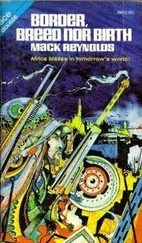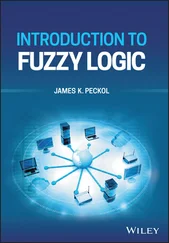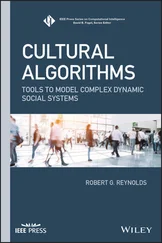1 ...6 7 8 10 11 12 ...20 Specialists may have teaching roles in public or private elementary, middle, and high schools, as well as community colleges and universities in second and foreign language contexts. Educators tend to specialize in an age group or subject matter. For example, an educator may focus on young learners who are learning to read in their primary language while learning to speak, listen, and read in English. At high school, an educator may teach world history bilingually. University-level TESOL educators may work with international exchange students who seek language development or academic degrees or those who were born in an English-speaking country and need support in reading and writing in academics. Others may focus on adult immigrant or refugee learners at a community college who need English for survival in their new culture. Survival English focuses on basic communication skills such as language for interacting when shopping, banking, renting/buying lodging, or securing employment, for instance.
Specialists teach different sizes and styles of classes: one-on-one, small-size classes of 6–20, medium classes of 25–30 students, or large classes of up to 50 in some settings. Some TESOL educators are “floating teachers,” who travel from school to school in a district to provide English language instruction. Some TESOL educators work exclusively online providing one-on-one instruction via distance education. TESOL educators may teach in English immersion, sheltered content, or bilingual classes.
Specialists may work for businesses with corporate language courses for employees or at private language schools. A huge, international corporation with headquarters in Cincinnati, Ohio, offers employees from their international locations intensive courses to enhance their English communication, so employees can collaborate better. Private language schools are privately owned companies that can range in size from small to large corporations. A private language school in Arequipa, Peru, teaches teens and adults oral English for use in their academic and professional lives.
To teach at public K–12 schools in many contexts, professionals need to hold a bachelor’s degree and a teaching license, certification, or other credential appropriate to the country. Depending on the setting, there may be other requirements. To teach English at community colleges and universities, the minimum credential is not a teaching license or certification, but a Master’s degree in TESOL.
To teach online, at private language schools, or in international corporations, the minimum credential varies. For the most part, individuals will need a bachelor’s degree and possibly a Certificate in Teaching English to Speakers of Other Languages (CELTA) or TEFL certificate. The CELTA certificate is a short-duration, intensive teacher preparation credential offered mainly in the United Kingdom and the European Union (EU). The CELTA certificate is widely respected in the field and yields highly capable instructors.
A TEFL certificate is typically granted by private companies, language schools, or universities. These certificates are valued internationally by hiring committees seeking instructors for private language schools. Individuals often confuse the TEFL certificate with a teaching license or teaching certification for a U.S. state.
Generally, individuals earn a TEFL certificate in a short-duration program in person or online. In this case, short-duration can mean 30–60 hr of instruction, but it can be as much as 180 hr. However, if the TEFL certificate is granted by a university, it is often for much more time and higher quality coursework. As a rule of thumb, the quality of teacher preparation is in direct correlation to the number of hours and the quality of the program. As consumers, individuals must make choices as to program duration, quality, and reputation that will help them develop in the profession.
The need to understand and be able to work with the unique backgrounds, skill sets, and needs of ELLs is great, so leadership roles are available to TESOL professionals. Often, TESOL educators have grown into leadership roles in public schools over time, serving as instructional coaches, team leaders, or district-level program administrators. As team leaders and instructional coaches, these individuals collaborate with other teachers to ensure high-quality academic instruction for ELLs while providing support for general educators in how to work with ELLs and their families. They may provide leadership for other TESOL educators in new developments in research and practices or offer district-level workshops and professional development opportunities for TESOL and/or general educators. District-level administrators often have instructional mentoring and guidance responsibilities, but they also interpret regional or state-level policy and mandates, evaluate and choose curricula, proctor standardized tests, and report student academic and/or language achievement on reports to national educational bureaus or ministries.
Another avenue in administration open to TESOL professionals is intensive English program (IEP) administration in universities. In second language contexts, IEPs offer courses to international exchange students studying for degrees or study abroad. These individuals organize all parts of the language program offered to ELLs including organizing curriculum at differing levels, ensuring consistent and quality instructional delivery, proctoring pre- and post-course/program assessment, ordering books and materials, arranging cultural excursions, handling all issues associated with student visas, arranging housing, marketing their program, and recruiting students.
Some TESOL professionals move into governmental roles. These professionals may work in national-level offices, bureaus, or ministries of education or state to organize international scholar exchange, oversee grant programs for teacher preparation or student exchange, research educational achievement of ELLs, develop laws, policy and guidelines around the teaching and learning of English, develop curriculum, and engage in soft diplomacy through the sharing of culture. For example, a TESOL educator might find opportunities in ministries of education in China or Japan to write curricula, textbooks, or standards.
Professors as teacher educators and researchers
While some TESOL professionals work with teachers in the public schools as instructional coaches, others prepare future teachers in the role of professor. Professors of TESOL must have a doctoral degree in TESOL or Applied Linguistics. However, in some settings an individual may instruct teachers with a Master’s degree in the field. Professors engage in teaching future teachers and investigating all perspectives of education and language related to ELLs. For example, individuals teach and research aspects of second language learning/acquisition theories and processes, linguistics, intercultural communication, race and ethnicity, educational systems, teaching, learning and assessment of academic or vocational subjects, speaking, listening, reading, writing, grammar, vocabulary, and pronunciation. Without the contributions of teacher educators and researchers, the field would not have core principles to provide a foundation for instruction.
Curriculum and assessment development and materials writing
Many teachers strive to engage their students by creating new materials and activities for their classes. In some cases, the materials they develop can be the basis for a book, which would become a helpful resource for other educators. Educators interested in writing and sharing their ideas may become well-known authors in the field and make a living creating textbooks and resources.
Читать дальше












